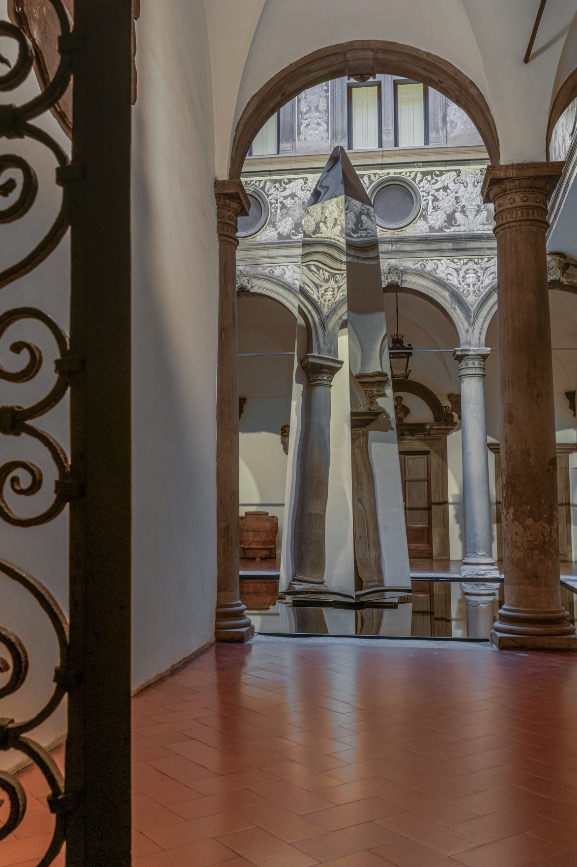Finding peace in late-summer Florence can feel like mission impossible, or thereabouts. Rising up in the austere courtyard of Palazzo Bartolini Salimbeni, just off piazza Santa Trinita, is a mirrored obelisk that reflects the surroundings, including the likes of you and me. In the run-up to Florence Art Week (September 28 to October 8), with big-ticket exhibitions featuring Anish Kapoor at Palazzo Strozzi, Robert Mapplethorpe at Museo Novecento and Cecily Brown at Palazzo Vecchio, I was caught off-guard by the deep contemplation elicited by this simple yet striking installation by internationally-renowned multi-disciplinary artist Felice Limosani.

The personal enrichment conveyed by the Collezione Roberto Casamonti on the first floor is well-known (although many more could accentuate their lunchtimes by gazing at the curated 20th-century cabinet of curiosities starring minor works by Mirò, Basquiat, Picasso, Kandinsky and Klee (just to name five of the artists exhibited here). Until the end of January, “the sleepless palace”, as Palazzo Bartolini Salimbeni is referred to because of the “per non dormire” motto displayed on the inner wall, is embellished by an additional layer of sweet slumber with the site-specific work that slowly rotates atop a water layer in the perfectly symmetrical Renaissance courtyard.
Commissioned by Roberto Casamonti, Pieces of Peace captivates onlookers, beguiling to the extent that minutes easily elapse alone with the magnetizing movement and stirring music. Limosani encourages us to be mindful of the times in which we live and to stand united in a collective yearning for peace in the midst of environmental calamities, denied human rights and ongoing wartime. Purposely apolitical in its messaging, the installation calls society to make a small difference by offering a peaceful moment through culture, knowledge, education, kindness and mutual respect. The choice to construct the artwork using an obelisk was a deliberate one. When the Ancient Roman army occupied Egypt, the decision was made to move the “Montecitorio Obelisk” from Heliopolis to Rome, where it remains to this day, in a slight to the city’s cultural identity and the indigenous population.
“I came up with Pieces of Peace as an installation that begins with an aesthetic experience, harnessing poetic, symbolic and metaphorical references,” Limosani explains. “An obelisk is not just a commemorative monument, whose etymology lies in the Latin verb, monere (to remember); in this instance, the obelisk is also an authoritative and assertive symbol. It stands in the space like a visual note that, unrooted in the ground, hovers over a water looking glass…The rotation alludes to the continuity and evolution of life, blending reflections and perspectives, truth and perception. At the same time, the steel conveys strength and sturdiness, universal values that determine the growth and development of every living condition. Reality is reflected on the mirrored surface of the artwork and with it also a wish for peace, as a condition that endures in our conscience and actions.”
The installation can be seen in the ground-floor courtyard of Palazzo Bartolini Salimbeni from Wednesday to Sunday, 11.15am-7pm.








